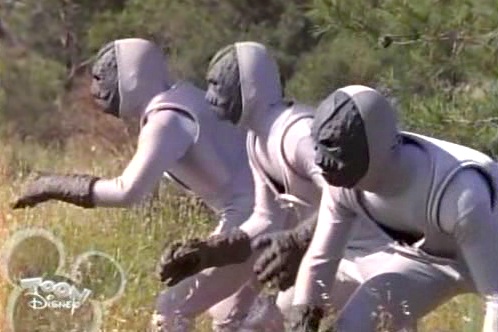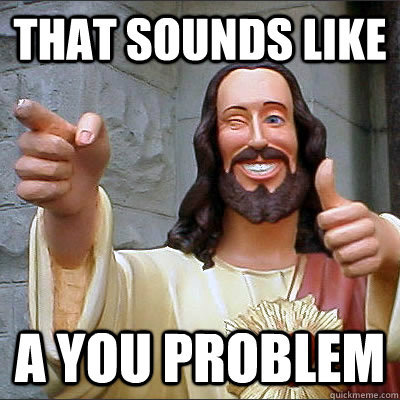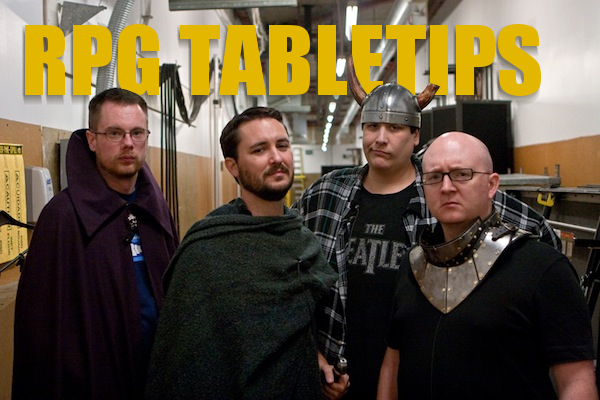RPG Tabletips: Making Combat Faster
As part of an ongoing series on running large parties for Tabletop RPGs, this week’s article is all about combat. Killing. Stabby-stabby.
Combat with over 8 players is going to be more sluggish than a weed-smoking panda bear, as I mentioned last week. It just is. However, sluggish and dead are two different things. If you try to run a large-party combat like a regular one, you’re going to get so bogged down in minutiae that you’ll make the United Nations look like something that actually works. Zing. Bobby 1, UN 0.
Too Many Dice on the Dance Floor
In a traditional game, RPG combat goes like this: Player Joe’s Turn – Player Joe examines the miniature map (or discusses the current state of the combat, if there is no physical representation). Player Joe looks at his character sheet. Player Joe wonders if jumping off a crate counts as a movement. Player Joe (and other players) look up this information in the RPG Guide of your choice. Player Joe learns it does count as a movement. Player Joe petitions the DM to think about changing this rule, or allowing an exception. DM mulls this over. DM decides it’s not a good idea for balance reasons. Player Joe goes back to his character sheet. Player Joe wonders if putting together a molotov cocktail would provoke an Attack of Opportunity. Player Joe asks the DM. The DM says no, because he doesn’t care anymore. Player Joe asks how splash damage works – no one knows this, because no one ever knows this. Player Joe (and the other players) go back to the RPG Guide to look up splash damage and grenade mechanics . . .
You get the point. Multiply this by four. It’s slow (all RPG combat is slow), but with four people it’s manageable. This shit balloons exponentially with 10+ people, so be sure to institute the following:
1.) The Starbucks Rule

Decide what you are ordering while you’re waiting in line.
When you’re at Starbucks, you don’t get to the counter and look up at the menu and start hemming and hawing. In real life, this is a flag that lets the other people in line know they are legally allowed to disembowel you. The same holds true for large-party combats. A player must decide what they are doing before their turn comes up, and they must have spent their waiting time researching the necessary rules for completing whatever wild maneuver they are attempting.
Using the above example, when the DM comes to Player Joe, he just says “I’m making a molotov cocktail, which provokes an Attack of Opportunity from the orc, and then I’m throwing it at the Miley Cyrus impersonator.” Player Joe rolls his bones, flames ensue, done. Next person.
If the player is new, or generally has trouble with RPG mechanics, than that player is free to ask a more expert player for advice (quietly, or at least in the background) while the combat proper is going on. The DM should only be dealing with players who’s active turn it is, essentially. Otherwise the whole thing grinds to a halt.
The only exception to this rule, and you as a DM must allow it, is when something in the combat changes drastically and nullifies the player’s prepared action. The player is badly injured and has to switch to a healing tactic, or his cover is burned by dragonfire and he has to move to a new position, or the guy he was going to attack is dead (and there’s no similar target to switch to), etc. This is going to happen, but in general the Starbucks Rule stands firm.
2.) The Roller-Derby Rule

Another action that slows down combat is individual dice rolling. Even in an easy, basic system like 3rd Edition D&D, rolling something as simple as a longsword attack has a few steps. First step: make an attack roll. Second Step: on a hit, roll damage. Well, the player knows what his attack roll and damage roll are, so why not have him roll them together? Instead of rolling a d20, then asking the DM if he hit, then looking at his character sheet, then rolling a d8, why not just have the player roll a d20 and a d8 at once? If he hits, then he just looks down at the d8 he already rolled. If he missed, then he just ignores the d8. One roll, done.
This even works for more complicated systems, it just requires more dice that are preferrably color-coded. Pinnacle’s “Weird West” game Deadlands requires an attack roll, an armor/cover roll, a hit location roll, a damage roll, and a blood loss roll. That’s painful with a large party, rolling one at a time. Instead, have the (again, color-coded) dice put into a cup or box or tupperware, then just have the player roll them all at once. Then he justs flicks through the dice, adding his modifiers and telling the DM as he goes down the list.
3.) The Group Initiative Rule

All RPG games have some form of what we call “initiative,” whether it’s called that or not. Initiative is just a mechanic to determine what order the characters get to fight or act in. Whose “turn” it is now, and whose “turn” it will be next. Easy.
However, with 8-12 player characters, the initiative order starts to become tricky. It’s important to remember that challenging a large party is difficult, and it often involves having loads of NPC enemies battling against them. So, let’s say there are 10 players (just a random number I’ve pulled out of my head, and certainly not the size of the large party I run). That means that you, as the DM/GM, are probably fielding anywhere from 10 to 20 enemies that are under your direct control.
Traditionally, each creature or enemy should have it’s own initiative, based on it’s speed, stats, etc. However, with a large party, that is what an older, more rustic man might call “horseshit.” Following that rule, you’re going to have to keep track of roughly 20+ initiatives, 20+ turns, per round.
Let’s say your NPC enemies include 5 skeleton archers, 10 zombie swordsmen, 3 undead priests, and 1 necromancer (evil beard optional). Having to track each individual archer, having them constantly interrupting – “Oh wait, between Joe and Spanky’s turn I have to roll an attack for this one skeleton archer over here in the corner, what’s his attack bonus again?” – is a pain in the ass. Not to mention it’s inefficient. So, just roll an initiative for each “group.” One initiative for archers, one for swordsman, one for the priests, and one for the Big Bad Necromancer. That way you’ll have all the stats ready and in your head (each group member likely having identical stats to its brethren), and you can just perform all of that group’s actions at once.
4.) The “Your Problem” Rule

To keep the combat from becoming a Monopoly-esque neverending frustration-fest, you as a GM must be comfortable delegating certain responsibilities to the players.
For example, iniative. Instead of keeping it on a secret hidden list that only you can see, instead think about grabbing a dry erase or chalkboard and writing the iniatives on that. Then, have the board displayed for everyone to see. Not only does this eliminate questions – “Wait, did I get skipped?” – it puts the onus on the players, and keeps them informed about what’s required of them. It also lets them know who’s “on deck,” so to speak, better faciliating the “Starbucks Rule” up above. If they can’t see the line, they don’t know if they’re about to be at the front of it.
Another application of the “your problem” rule is a little more controversial – give the players target numbers. It’s general GM policy to be as sneaky as possible, but in a large game you don’t have the time for it. Instead of being coy about things like Armor Class, just tell the players point blank (preferably after the first successful hit): “It’s going to take an attack roll of 22 or better to hit this guy.” That way, if a character rolls below that, he doesn’t even have to bother with his attack. Joe can just say, “I didn’t hit” instead of doing the back-and-forth secret AC dance.
Have the players move NPC miniatures instead of walking all the way around the table: “Joe, move that bugbear up to your character.” Have the players roll percentages for random things: “There’s a 20% chance the floor collapses. Spanky, roll it.” Magic, spells, and psionics have to fall firmly under the “Your Problem” rule because of their inherent flexibility – no DM, no matter how gifted, knows the potential effects of every single spell or power. When the players cast as spell, THEY have to be the ones looking it up and reading the description to you. Magic and powers are usually extremely complex systems – It’s harsh, but I might even consider a seperate rule altogether to not allow brand-new players to even play full spellcasters for this reason. You know, if you’re feeling draconian.
The basic idea is this: before doing ANYTHING during combat as a DM, think to yourself “Is this task something that someone else can do without harming the game?”
5.) The “Kill All The Lawyers” Rule

Rules are important. They keep everyone on the same page, especially considering how most of a tabletop RPG is happening in the theater of the mind. Rules are the difference between a fun RPG session and a bunch of lunatics all talking at the same time about minotaurs.
However, rules can also slow everything down. Especially when people don’t agree on how they work. As a DM running a large party, ain’t nobody got time for an impromptu rules hearing. When something (usually “grappling rules”) has ground the fight to a complete and utter halt, it’s important to make up a temporary solution to the problem and lay on.
DON’T Say: “Forget it. No grappling. Just hit him with your sword.” This stiffles creativity, and more importantly, defeats the whole purpose of playing a tabletop RPG. The awesome thing about pen-and-paper, and the great advantage they have over video games, is that the player can literally do ANYTHING. There is no gatekeeper controlling his characters actions, no limited code to define his reality.
DO Say: “You know what? We’ll figure out grappling before next session. Why don’t you just roll to see if you hit, roll a strength check, and if you beat his strength, you’ve pinned him.” This allows the player to live out their swashbuckling ways, makes a concession to rules, and allows things to keep on keepin’ on. RPG rules are arbitrary anyway – as long as it feels like your temporary call makes sense, players will concede without issue. Especially when it involves successful wrestling moves.

If one of your impromptu calls happens to screw a player – they die from it, or are badly hurt by it, or lose their favorite weapon because of it – then make it clear to the players that if your call was wrong, and you’ll try to make it right between sessions. Don’t retcon the action – instead, offer restitution.
If the DM and the players disagree, the DM always wins. This what we call “Rule 0” of tabletop RPGs. However, the DM only wins because it keeps the game going. Don’t abuse your power. Make it clear to players that they can challenge your rulings, as long as they do so between sessions. If you boned it up, then it’s your job to fix it.
If Joe lost his +5 defending longsword down a chasm because your made-up disarming rules screwed him, then maybe a couple sessions down the line offer Joe’s character the services of a Vistani who knows where the sword is, for a small favor . . .
The short version: No rules arguments at the table. Keep it to email between games. If you make a bad call, own up to it.
The Breakdown
So these are the keys to speeding up your massive combats, brevity-style:
- The Starbucks – Players figure out their next move ahead of time.
- The Roller Derby – Roll everything at once. Color code.
- Group Initiative – Similar NPCs go at the same time.
- “Your Problem” – Delegate responsibilities to players.
- “Kill the Lawyers” – Argue rules outside of game time. Play during game time.
I hope you enjoyed these Tabletips, but more importantly, I hope they relieved a little stress or offered a bit of illumination. For the full series of articles on how to best prepare for large parties, see below.
How to Find a Story – Finding a story for your adventure.
Managing Party Size – How to prevent your group from becoming too big.
Prepping For Massive Parties – What to expect when it does get too big.

